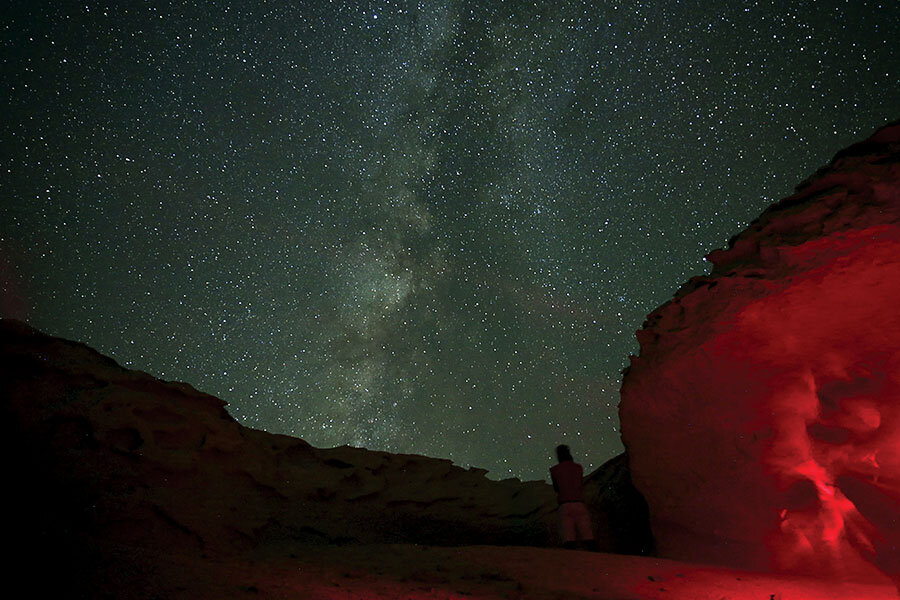Finding a place the 19th-century way
Loading...
A radio report caught my attention the other day, as it spoke straight to my heart: Cadets at the US Naval Academy in Annapolis, Md., are now required to revisit and potentially revive the ancient skill of steering a ship by the stars.
By the stars – imagine that: looking up at the sky, not down at a screen, so many years after the heavens’ critical role in guiding mariners has fallen by the wayside, first displaced by radio waves, then by modern GPS. Much is gained – but something also lost – in such progress, I think.
Chalk it up to my love of 18th- and 19th-century seafaring tales (reading them is one of my coping mechanisms for life in the landlocked Midwest), when sailors had only celestial maps for navigation and still miraculously managed to sail the planet’s vast oceans and even circumnavigate the globe.
Recent cybersecurity concerns have triggered renewed interest in backup navigational strategies such as stargazing, and simple hand-held technologies like the sextant, so often invoked in Richard Henry Dana’s “Two Years Before the Mast,” a tale that chronicles a mid-19th-century merchant ship’s endlessly harrowing voyage from Boston to California and back.
I wouldn’t wish the harsh conditions of that trip on modern sailors, but I am all for anything that gets people clued in to their compass bearings and travel trajectories without high-tech and often mindless guidance.
“Is that north or south of here?” I’ve asked motel clerks and gas station attendants about a particular address I’m seeking in my GPS-less travels.
“Well, it’s that way,” comes the most frequent reply, accompanied by a pointed finger, and I realize that north, south, east, and west are not familiar coordinates to many people otherwise thoroughly attuned to the local lay of their land.
To be fair, I haven’t always been attuned to compass points either, not to mention anything more abstract than my own sweet turf. In fact, it was not until I was a young adult, lazing on a float in my parents’ pool on a late summer’s visit home, and watching the sun dip below the roofline – with a chilling shadow sliding across the water – that I first realized that my childhood home faced due west. It struck me as odd at the time that I’d been oblivious to this simple fact, especially since I’d begun to be schooled in geology and certainly in compass work. But like so many, I’d grown up thinking and navigating in terms of other coordinates, based on familiar streets, rights and lefts, and reference points such as my school, the homes of friends, the nearest playground, and the local shopping plaza.
One day, when a car pulled alongside me on my small bike and the driver asked for directions to a Rochester, N.Y., landmark, I told him to drive to Kathy’s house, turn left, and then turn right at my school, and so forth. He smiled wanly, tipped his hat, and drove on to more helpful directions, one hopes.
All the while, the sun moved overhead in the deeply familiar curvature I never fully attended.
I’ve long since become accustomed to finding my bearings on travels in unfamiliar territory by the sun’s position. And now I’d love to sit in on a class at the academy to learn to navigate by the moon and stars. It’s a skill I’ll likely never need to draw upon. Yet just knowing how would connect me, in a new and profound way, to the historical arc of human experience on this planet.
As for modern sailors, it might just bring them safely home one day, if all else fails.







